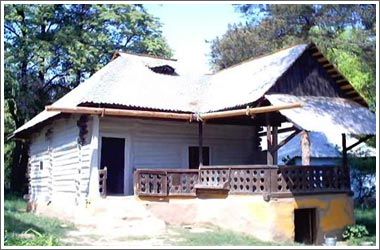
Dimitrie Gusti Village Museum is located in Herastrau Park in Bucharest and is one of the first ethnographic museums in the open air in Romania and throughout the world.
The museum was founded in 1936 and in the 1930s in Europe there were only two open-air museums in Sweden, Skansen Museum of Stockolm (1891) and in Norway, Bigdo Museum of Lilenhamer. In Romania there was already the Ethnographic Museum of Transylvania in Hoia Park of Cluj (1929).
The Dimitrie Gusti Museum was opened officially on May 10, 1936 in the presence of King Carol II and was opened to the public a few days later, on May 17, 1936.
An important role in establishing of the museum had Dimitrie Gusti, the museum bearing his name. The Professor Dimitrie Gusti is the founder of Sociological School of Bucharest and in which time has been head of the department of sociology from the University of Bucharest has organized multiple studies and research with his students and ethnography, geography researchers and from other fields in a large number of villages in different regions of Romania, especially in areas where folk traditions were kept strong.
The museum contains more than 320 monuments arranged on a surface of 11 hectares. Each year are held restoration works, on average for about 20 monuments.
The museum includes collections of old popular rugs, popular ceramics, wood and textiles, also a Fototeca collection including 93,000 black and white photographs made during research on the field during 1950-2002 in rural areas of the country or during the works for the conservation and restoration. A great number of photos present the cultural events that took place in time in the picturesque area of the museum.

































